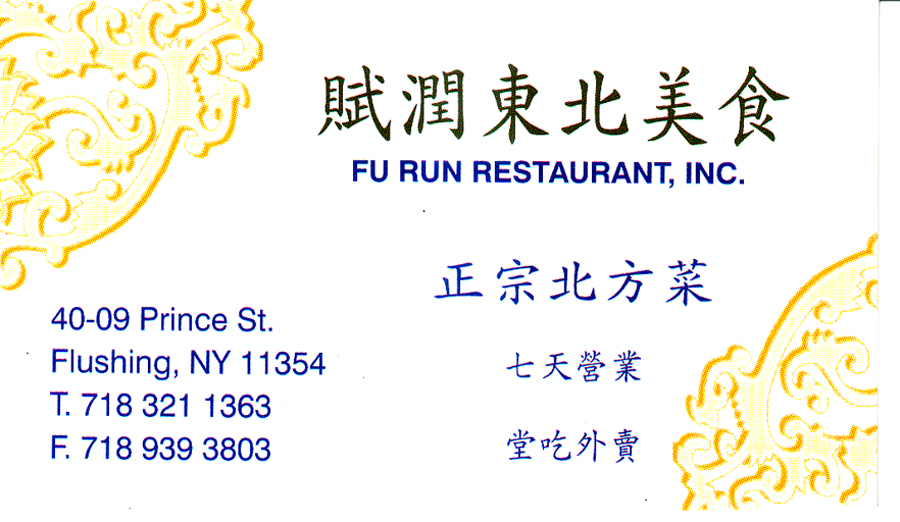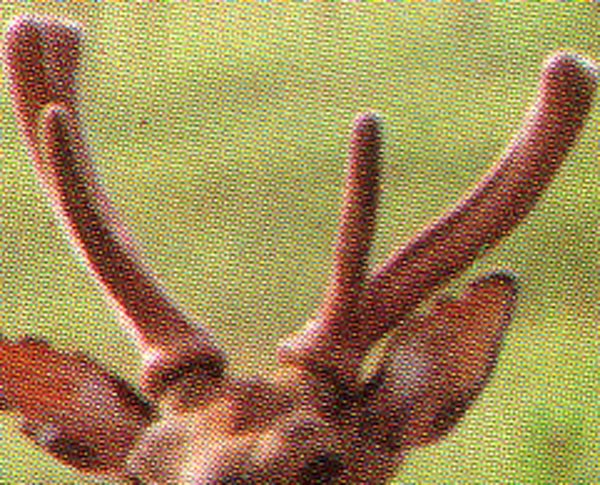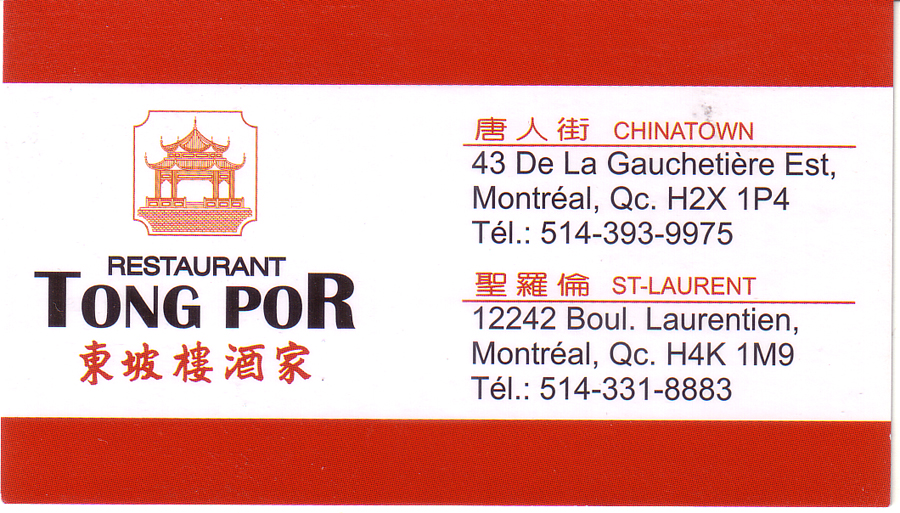
| What is Flavor and Fortune? |
| How do I subscribe? |
| How do I get past issues? |
| How do I advertise? |
| How do I contact the editor? |
Read 7002810 times
Connect me to:
| Home |
| Articles |
| Book reviews |
| Letters to the Editor |
| Newmans News and Notes |
| Recipes |
| Restaurant reviews |
| Article Index (all years, slow) |
| List of Article Years |
| Article Index (2024) |
| Article Index (last 2 years) |
| Things others say |
| Related Links |
| Log In... |
| Authors |
| Categories & Topics |
TOPICS INCLUDE: Kudos for the Amelia Award; Peppercorn correction; Waterfront International replacement; Pilose are deer antlers; American-Chinese food; Dim Sum in Canada; Pork paste; Uyghur food; Soy products; Meat, fish, and pork pastes
| by Jacqueline M. Newman |
Letters to the Editor
Summer Volume: 2011 Issue: 18(2) page(s): 8 - 9, and 13
From ANN, PV, MARIA, and so many others:
Congratulations on receiving the Amelia Award. We thank you for your lifetime of efforts, promotion, and popularization of Chinese cuisine. The amount of time spent is hard to estimate, the numbers who have benefitted also difficult to estimate. Allow us, your readers to add our congratulations. You have contributed so much to educating us and advancing Chinese Cuisine.
To ALL: Thanks for the compliments, and thanks to the many who worked with me on what has been an incredible life-long journey.
From VALERIE in BROOKLYN NY via e-mail, and others:
A correction about white and black peppercorns. Black peppercorns are unripe seeds of the pepper plant cleaned and dried in the sun or by machine. White pepper is the seed, hull removed by soaking, chemical, mechanical, or other means.
VALERIE and ALL: Mea culpa; how right you are and how wrong I was. And an added note, a popular way of black to white is also by 'retting' or soaking peppercorns a week or more until the exterior flesh softens and decomposes or is cleaned of remaining debris. Then they are dried and packaged.
From EMANUEL via e-mail: You once reviewed the Waterfront International Enterprise restaurant; it was in Volume 14(2) on page 9. I went there recently and learned it has been replaced by another Dongbei eatery called Fu Run. The food seems the same; what happened?
You once reviewed the Waterfront International Enterprise restaurant; it was in Volume 14(2) on page 9. I went there recently and learned it has been replaced by another Dongbei eatery called Fu Run. The food seems the same; what happened?
EMANUEL: It is the same owners plus one additional person in the partnership. They now use their Chinese name which was always Fu Run. The kitchen is the same, menu likewise.
From LIZZY via e-mail:
Read about 'pilose' and assume it deer antlers. Am I correct? What can you tell all about their use? LIZZY: Yes, pilose are antlers, and one of three Chinese treasures; the others are ginseng and marten pelts. All are used for health reasons. Pilose were written about in the Book of Songs which is also known as the Book of Odes circa 1000 BCE. There were reports of antlers some twenty-seven hundred years ago, but not what they were used for. Later, in Shen Nong Ben Cao of about 100 CE, they do tell a few ways to use them. During the Ming Dynasty which began in 1368 CE, China began raising deer specifically for their antlers. They use two different species, 'sika' or Cervis nippon, and 'red deer' or Cervis elaphus. They like them young and velvety and soft, when they are filled with blood and warm to the touch. The first set is often sawed off when just small protrusions; these are highly prized. More are sawed off the following summer and thereafter, often annually as deer produce many sets in their lifetimes. If not removed, they calcify and harden. Medicinally, the soft ones are sliced and dried, some powdered and made into extracts. The Chinese believe pilose help the elderly and others recuperating from major illnesses, and they believe they fight inflammation. Other parts of deer are used for other reasons including to counteract rheumatism, treat anemia, raise blood pressure, etc. However, these require killing the deer, harvesting the antlers does not. A few factoids recently read: More than five thousand farms in China raise deer; Koreans use more antlers than do the Chinese; and New Zealand, Australia, and Canada are large antler producers.
LIZZY: Yes, pilose are antlers, and one of three Chinese treasures; the others are ginseng and marten pelts. All are used for health reasons. Pilose were written about in the Book of Songs which is also known as the Book of Odes circa 1000 BCE. There were reports of antlers some twenty-seven hundred years ago, but not what they were used for. Later, in Shen Nong Ben Cao of about 100 CE, they do tell a few ways to use them. During the Ming Dynasty which began in 1368 CE, China began raising deer specifically for their antlers. They use two different species, 'sika' or Cervis nippon, and 'red deer' or Cervis elaphus. They like them young and velvety and soft, when they are filled with blood and warm to the touch. The first set is often sawed off when just small protrusions; these are highly prized. More are sawed off the following summer and thereafter, often annually as deer produce many sets in their lifetimes. If not removed, they calcify and harden. Medicinally, the soft ones are sliced and dried, some powdered and made into extracts. The Chinese believe pilose help the elderly and others recuperating from major illnesses, and they believe they fight inflammation. Other parts of deer are used for other reasons including to counteract rheumatism, treat anemia, raise blood pressure, etc. However, these require killing the deer, harvesting the antlers does not. A few factoids recently read: More than five thousand farms in China raise deer; Koreans use more antlers than do the Chinese; and New Zealand, Australia, and Canada are large antler producers.
From JEERA via e-mail:
This is not a food question, but do you know how large the Chinese population is in the Flushing area of Queens, and how many Chinese restaurants are there?
JEERA: Providing an answer about the current population is premature because census folk are tabulating data collected earlier this year. They will tell how many Asian and Pacific Islanders there are in Queens; they do not advise only about the Chinese population, nor does anyone else we spoke to. As to Chinese restaurants, some two hundred or so are in Flushing alone, many more elsewhere in Queens. Chinese Restaurant News reports the approximately forty-five thousand Chinese restaurants in USA serve two and a half million meals each and every day. lso chew on a few other population information. The health department in Queens has sanitary reports for about six hundred eighty-five Chinese restaurants; more than forty nine percent, actually 49.6% of Asians in New York City live in Queens; forty-six percent of them were born outside the United States; in Queens, foreign-born folk come from more than one hundred different countries. That makes Queens the most diverse county in the USA.
From JANE via e-mail:
I believe Chinese food is basically corrupted, standardized, and dull in the United states. Do others have the same perception? Can you share some perceptions about American Chinese food?
JANE: Talks about this and related topics are shared by many, and one presenter--an Asian author, at the 2008 10th Annual Symposium held in Malaya and sponsored by the Taiwanese Foundation of Chinese Dietary Culture indicated ethnic identity, ethnic interactions, and mass media shape Chinese food as does globalization, adaptation, hybridization, internationalization, and the Chinese diaspora itself. He says they transform Chinese cuisine outside of Chinese enclaves. We would add that economics and demands of restaurant customers influence what Chinese restaurants serve. As they are not charities, they prepare what customers demand and accept. Several have said their bottom line tells them that many of their customers have low expectations, want more Chinese-American tastes and fewer classic Chinese ones. That said, demand more authentic Chinese food and you can get it. We know that because we do. Many Americans believe Chinese food is cheap, they are not willing to pay the same amount for a great Chinese meal as a good French one; would you?
From DANIEL in Plattsburg NY via snail mail:
. Once met you on a cruise and spoke to you about a great dim sum restaurant in Canada. Enclosed is their card. You do need to get thereDANIEL: Thanks, the card is shown. Another Canadian friend agrees this is a great place for dim sum, banquets, baptisms, anniversary parties, etc. However, we have no plans to visit Montreal soon. Does anyone want to review it? If you go, send review, take-out menu, and pictures, too.
Once met you on a cruise and spoke to you about a great dim sum restaurant in Canada. Enclosed is their card. You do need to get thereDANIEL: Thanks, the card is shown. Another Canadian friend agrees this is a great place for dim sum, banquets, baptisms, anniversary parties, etc. However, we have no plans to visit Montreal soon. Does anyone want to review it? If you go, send review, take-out menu, and pictures, too.
From JESS via e-mail:
Do appreciate every item about the ethnic nationality groups in China. Are there any autonomous towns they live in?
JESS: Yes, some fifteen hundred of them, also one hundred twenty autonomous counties, thirty prefectures, too. Those with large ethnic populations do have, since 1952, rules for regional autonomy, most promote and preserve their cultures, their foods, too.
From TONY via e-mail:
How long have the Chinese eaten taro; any idea? What is its popularity in the United States?
TONY: There are records of and pieces of rice and taro growing in China some twenty thousand years ago. A food historian told us both probably originated in this part of the world or in Northern India and/or Oceania. He also said that by the 20th century, seventy-two varieties of taro were known just to grow in Hawaii.
From INEZ in HONDURAS via e-mail:
Recently, in San Francisco, saw pork paste in a can. Did not purchase it because I had no recipe.
INEZ: Fish paste, pork paste, and in Halal stores, even beef paste can be purchased already made and fresh; or you can purchase it as you saw it, canned. At the bottom of this column are recipes to make it and to use it; enjoy both. Remember, if you make your own, and do not use the pork paste balls immediately, freeze them on a cookie sheet and when hard, transfer them in into a heavy plastic bag and insert the bag into a freezer container or a double thick freezer bag. Not stored correctly, they get freezer burn very quickly.
From KASHI via e-mail:
What are most popular Uygur foods?
KASHI: In one word, lamb. Matter of fact, your name is a nickname of the Kashgar region in Xinjiang where many Uygur people live and love lamb and mutton. They love it roasted, grilled, boiled, cut into kebobs, and made other ways, too. Give lamb to a Uygur with a drink of their beloved pomegranate juice and they will be happy. Cover it with egg white and roll it in local spices before cooking, they will be even happier.
From JOAN in Brooklyn NY via e-mail:
Are all soy products, such as doufu, soy sauce, and tempeh used by the Chinese?
JOAN: Am sure there are Chinese in China and elsewhere who use many soy products, but not all soy products are common in China. Obviously soy sauce is, but not all soy sauces are the same. Some are made only with all soybeans, more commonly, they are made from a combination of soybeans and wheat. They use many different mold starters, which the Japanese call koji. And, not all soy sauces are fermented, for example, La Choy and Chun King are not. Fermented soy sauce has more flavor components than not fermented ones. Miso is a fermented Japanese soy product often made with only soy beans, but it can be made with soybeans and barley, or soybeans and rice. Tempeh is a popular Indonesian fermented soy-based item made in large leaves. Its mold grows and transforms it into a soybean cake. Natto is soy-based, fermented, and often a breakfast food in Japan. Fuyu is made with coagulated soy milk as is doufu; they are rarely fermented. Different molds and different techniques are used making soy-based foods. Different Asian countries make then differently requiring everyone to read their labels to know what ingredient(s) each one has. Also, go to the web to learn how each is commonly made.
| Meat and/or Fish paste |
|---|
| Steamed Doufu and Pork Paste |
|---|
1 pound soft or silky doufu, cut into one-inch cubes 1 Tablespoon oyster or scallop sauce 1 teaspoon sugar dash ground white pepper 1/4 pound pork or another protein 1 scallion, minced, divide green and white parts Preparation: 1. Put cubes of doufu in a shallow heat-proof bowl. 2. Cut the pre-cooked pork balls in hlaf and put them on top of the doufu. 3. Mix oyster sauce, sugar, white pepper, and the white part of the scallion, pour over the sliced pork paste and the doufu. 4. Steam over boiling water for fifteen minutes, remove from the steamer and sprinkle with the green scallion pieces, then serve or freeze, as desired. |

Copyright © 1994-2024 by ISACC, all rights reserved
Address
3 Jefferson Ferry Drive
S. Setauket NY 11720